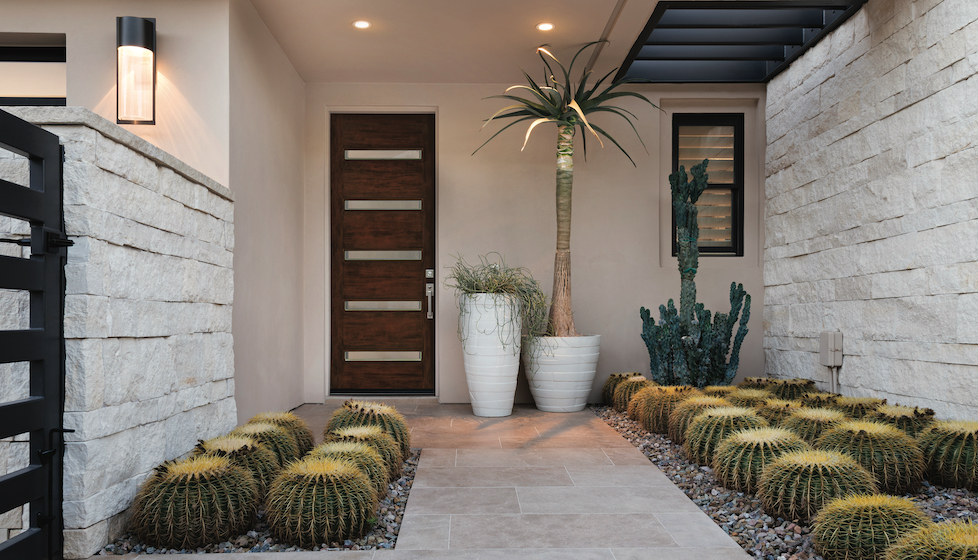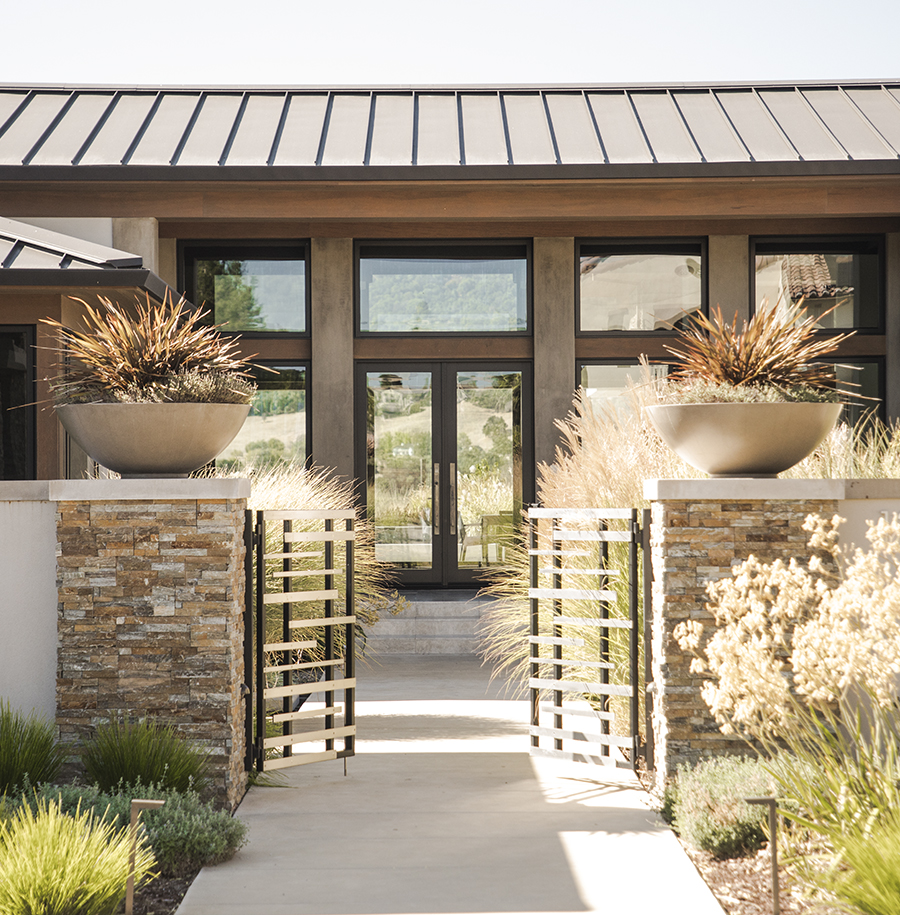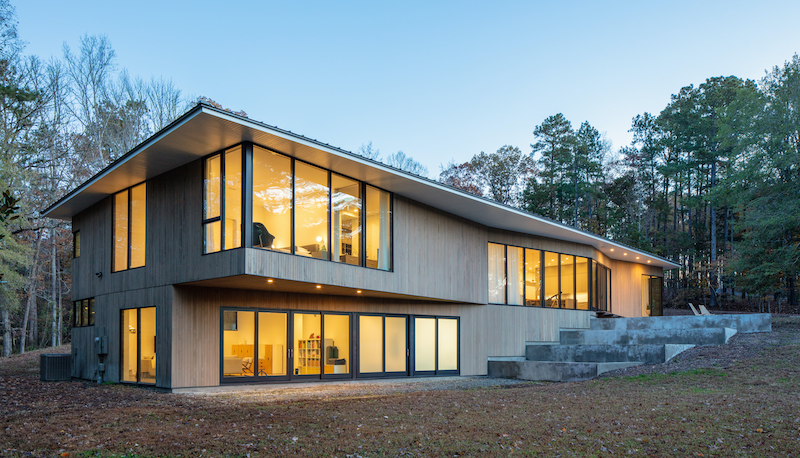The fast rise of this durable exterior door material underscores its remarkable characteristics.
Can anything top a quality fiberglass door?
It’s a bold question to ask because of the material’s brief time in the marketplace. The first fiberglass exterior door was introduced less than 40 years ago. Wood and steel, the material’s leading competitors, have been around much longer.
Why fiberglass? It starts with the material itself – a thermoplastic resin reinforced with glass fiber. Cheaper and more flexible than carbon fiber, fiberglass is stronger than many metals by weight, is non-conductive, and can be molded into almost any shape, including the skin of an exterior door.
Surprising Attributes
Fiberglass does not swell, rot, bow, crack, dent, or rust, unlike competing materials. It‘s nearly maintenance-free for the life of the home. Its thermal characteristics run circles around a comparably sized solid wood door, offering five times the insulating value. Stretchable weight-loading tests show fiberglass rivals steel for door security.
How it measures up aesthetically is where things get doubly impressive Just ask Dan Jacobs, Director and Product Line Manager for JELD-WEN Exterior Doors. Jacobs knows some design purists argue there’s nothing like the natural warmth and beauty of wood. That may be so. There’s also nothing like the warmth and beauty of a fiberglass door.

Dutch Door Test
To prove it, take the JELD-WEN Dutch door test: one-half of the divided door is wood, the other JELD-WEN’s high-end IWP ® Aurora® fiberglass. But which is which? JELD-WEN created one for display purposes. “We invite seasoned contractors and builders to tell them apart,” Jacobs says. “They can’t. A JELD-WEN fiberglass door mimics wood so exactly it’s almost impossible to judge. The only people that can are our own manufacturing experts.”
Two Differentiators
How do you try to top nature on the shop floor? You start with a canvas of this high-performing material. JELD-WEN predominantly uses a common formulation called SMC, or sheet molding compound, but premium doors use a hand-laid formulation similar to what’s used in boat construction.
Next, JELD-WEN uses a portfolio of several hundred super-realistic molds to form the fiberglass door skin. “Molds are where the big investment is,” Jacobs explains. Depending on the product line, JELD-WEN uses a variety of techniques to construct the molds. One technique used to create the most realistic doors uses proprietary technology to replicate the look of a real wood door on a metal die. The die is pressed into the molded compound to create fiberglass door veneers that recreate the original door’s wood grains.
Perfectly Imperfect
Realistic finishing requires even more hands-on work. “Finishing a fiberglass door is an art form. Our premium fiberglass doors receive 10 layers of paints or stains. We hand-accentuate knots, imperfections, and coloring you find in wood,” Jacobs says. Comparing a factory finish to a field finish is like comparing a factory-coated car to one you paint in the driveway with a brush.
Consistency Beyond the Door
Fiberglass’s uncanny ability to mimic wood isn’t limited to just doors. Take JELD-WEN’s Architectural Collection door systems, for instance. Every component in the system — from door to jambs to brickmold, from mull post to lite frame — is clad in fiberglass of the same woodgrain detail and stained to match precisely. So what looks like an impressive front entrance constructed of matching wood is actually a complete fiberglass system with incredible aesthetics and robust durability that can stand up to even challenging climates for decades to come.
“Fiberglass is a really cool material. It has so many capabilities,” Jacobs says. “We’re constantly looking at new ways to present even more value to our customers.”



